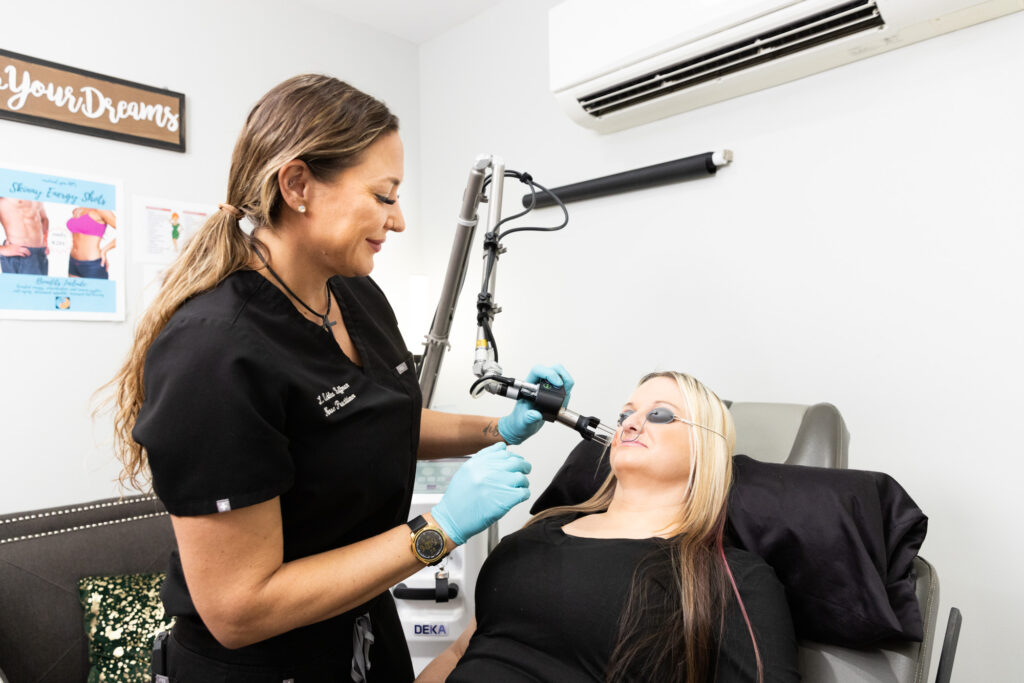We use sclerotherapy in Lancaster to reduce the appearance of our patients’ vascular blemishes, spider veins, and broken blood vessels. The sclerosing agent causes irritation and inflammation inside the vein, leading it to gradually clot, close, and disappear.
We use the brand Asclera as our sclerosing agent, which the FDA approved in 2010. Asclera causes undesired spider veins to shut with no more than a prick of an injection needle.


















